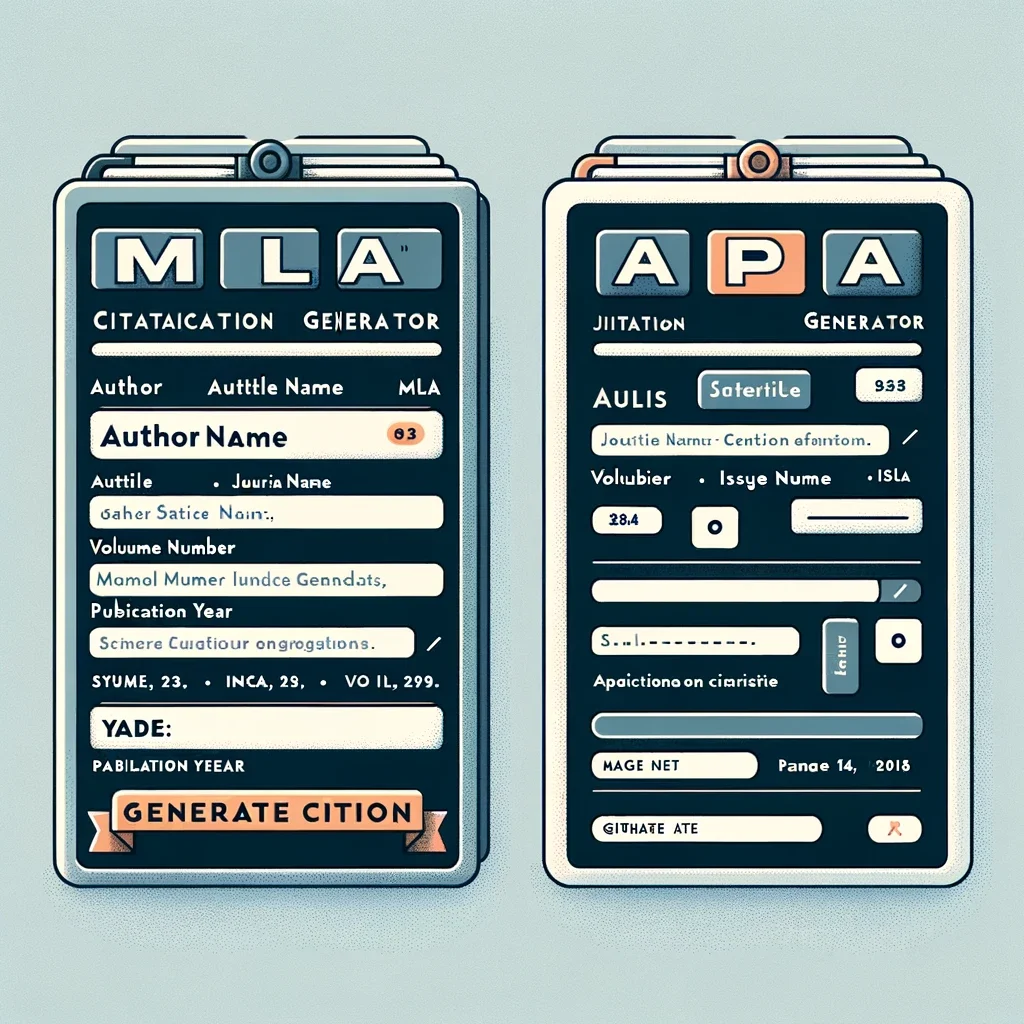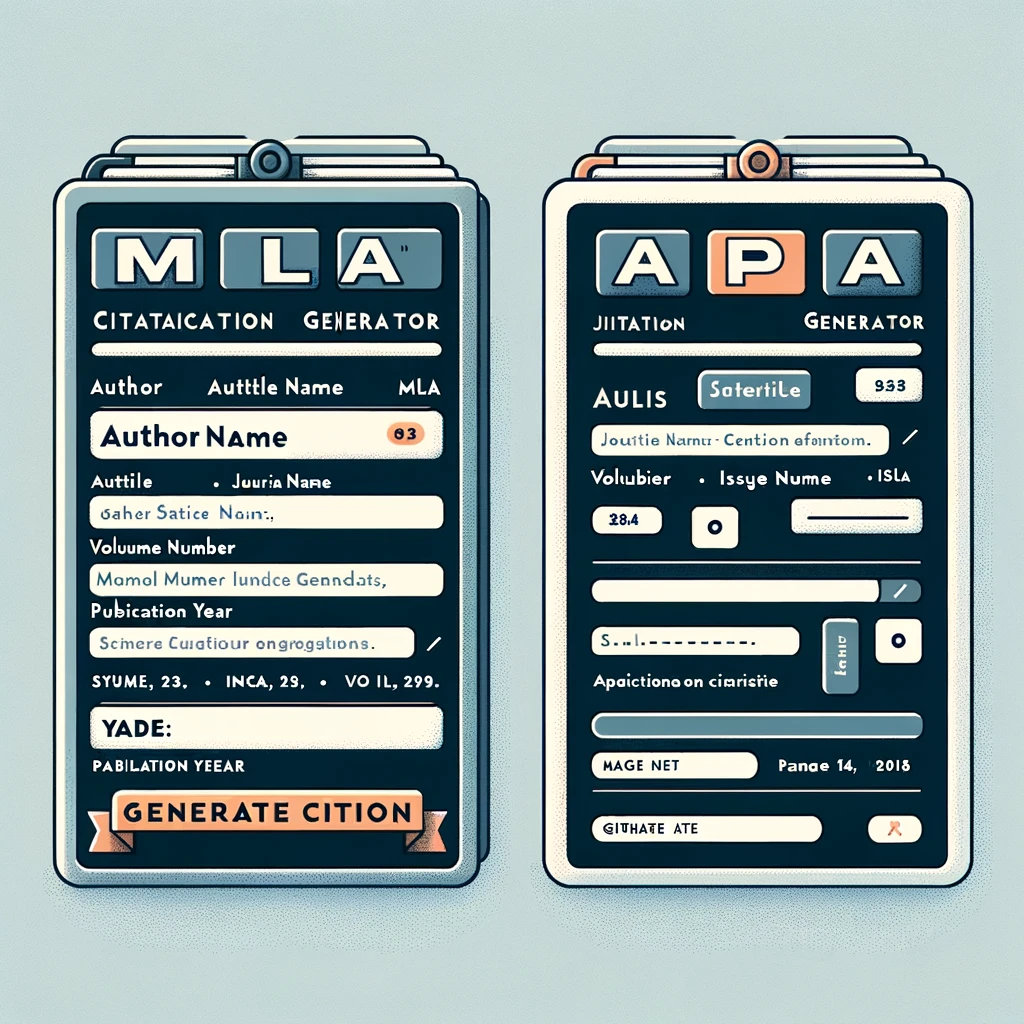Table of Contents
How to Quote in Various Formats: APA, MLA, and Chicago
Quoting correctly is essential in academic writing to give credit to the original authors and to provide evidence for your arguments. The format you use for quoting depends on the style guide you are following. Here, we’ll explore how to quote in APA, MLA, and Chicago styles in detail. Check our citation generator

APA (American Psychological Association)
APA style is commonly used in the social sciences. Here’s how you can quote sources in APA format:
In-text Citations:
- Short Quotes: For quotes under 40 words, incorporate the quote into your text and enclose it with double quotation marks. Include the author’s last name, year of publication, and page number in parentheses.Example: According to Smith (2020), “Quotation marks are used to set off and represent exact language” (p. 25).If you incorporate the author’s name in the narrative, you only need to include the year and page number in parentheses.Example: Smith (2020) states that “Quotation marks are used to set off and represent exact language” (p. 25).
- Long Quotes: For quotes 40 words or more, use a block format without quotation marks. Indent the entire quote half an inch from the left margin. Maintain double spacing throughout, and place the parenthetical citation after the closing punctuation.Example: Smith (2020) stated:Quotation marks are used to set off and represent exact language. They are important in providing proper credit to the original authors and supporting your arguments with reliable evidence. Accurate quoting is crucial in academic writing. (p. 25)
Reference List:
Include full details of the source in the reference list at the end of your paper. The format typically includes the author’s name, publication year, title of the work, and publication information.
Example: Smith, J. (2020). Title of the book. Publisher.
For journal articles, include the volume and issue numbers, as well as the page range.
Example: Smith, J. (2020). Quoting in academic writing. Journal of Writing, 12(3), 24-30.
Save your time! We can take care of your essay
Proper editing and formatting
Free revision, title page, and bibliography
Flexible prices and money-back guarantee
PLACE ORDERMLA (Modern Language Association)
MLA style is commonly used in the humanities. Here’s how you can quote sources in MLA format:
In-text Citations:
- Short Quotes: For quotes that are four lines or less, use double quotation marks and include the author’s last name and page number in parentheses. The period goes after the parentheses.Example: Smith states, “Quotation marks are used to set off and represent exact language” (25).If the author’s name is mentioned in the sentence, include only the page number in parentheses.Example: According to Smith, “Quotation marks are used to set off and represent exact language” (25).
- Long Quotes: For quotes longer than four lines, use a block format without quotation marks. Indent the entire quote one inch from the left margin. Maintain double spacing and place the period before the parenthetical citation.Example: Smith explains:Quotation marks are used to set off and represent exact language. They are important in providing proper credit to the original authors and supporting your arguments with reliable evidence. Accurate quoting is crucial in academic writing. (25)
Works Cited:
Include full details of the source in the works cited page at the end of your paper. The format typically includes the author’s name, title of the work, publication information, and medium of publication.
Example: Smith, John. Title of the Book. Publisher, 2020.
For articles in journals, include the volume and issue numbers, year of publication, and page range.
Example: Smith, John. “Quoting in Academic Writing.” Journal of Writing, vol. 12, no. 3, 2020, pp. 24-30.
Chicago (Chicago Manual of Style)
Chicago style is commonly used in history and some social sciences. Here’s how you can quote sources in Chicago format:
In-text Citations:
- Short Quotes: For quotes under 100 words, incorporate the quote into your text and use double quotation marks. Include a superscript number at the end of the quote that corresponds to a footnote or endnote.Example: According to Smith, “Quotation marks are used to set off and represent exact language.”¹The superscript number should appear after any punctuation except a dash.
- Long Quotes: For quotes 100 words or more, use a block format without quotation marks. Indent the entire quote half an inch from the left margin and maintain single spacing. Place the superscript number at the end of the block quote.Example: Smith stated:Quotation marks are used to set off and represent exact language. They are important in providing proper credit to the original authors and supporting your arguments with reliable evidence. Accurate quoting is crucial in academic writing.¹
Footnotes/Endnotes:
Provide full details of the source in a footnote or endnote the first time you cite it. For subsequent citations, you can use a shortened version.
Example:
- John Smith, Title of the Book (Publisher, 2020), 25.
- Smith, Title of the Book, 27.
Bibliography:
Include full details of all sources in a bibliography at the end of your paper. The format typically includes the author’s name, title of the work, publication information.
Example: Smith, John. Title of the Book. Publisher, 2020.
For journal articles, include the volume and issue numbers, year of publication, and page range.
Example: Smith, John. “Quoting in Academic Writing.” Journal of Writing 12, no. 3 (2020): 24-30.
Final Remarks
Quoting accurately and correctly in APA, MLA, or Chicago style not only gives credit to the original authors but also strengthens your own writing by providing credible evidence. Always consult the latest edition of the relevant style guide for detailed instructions and specific examples.


